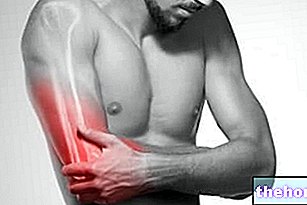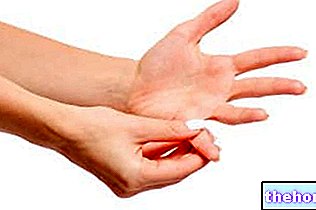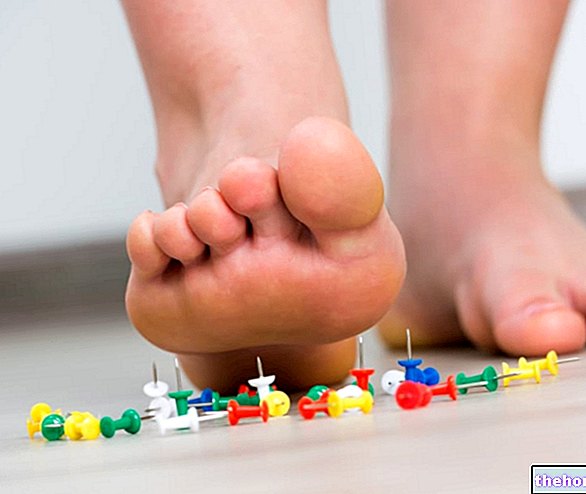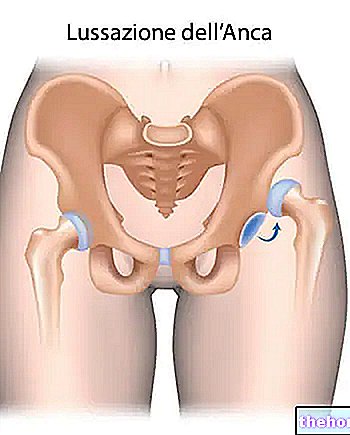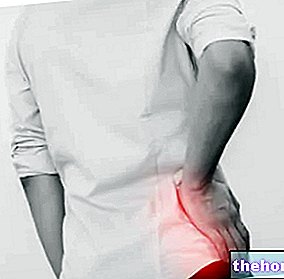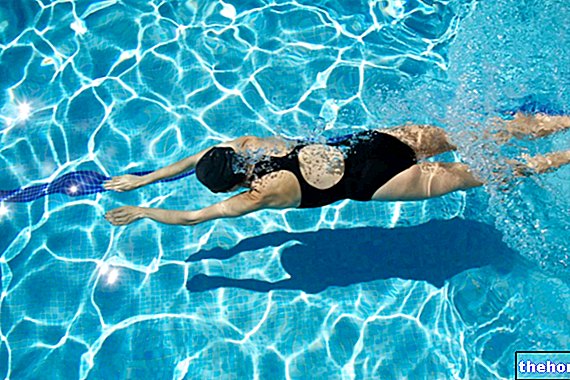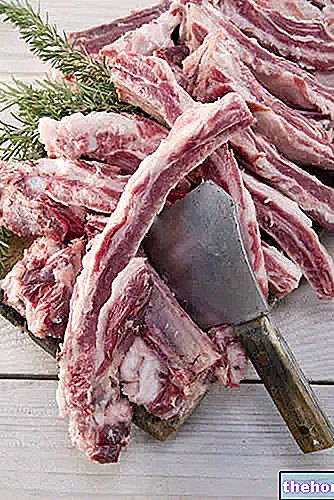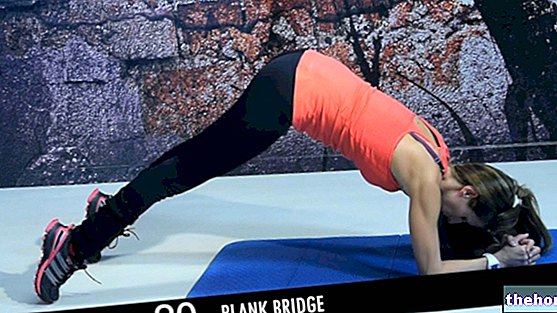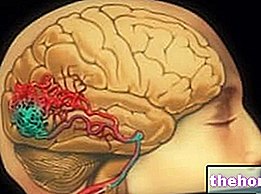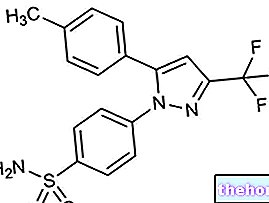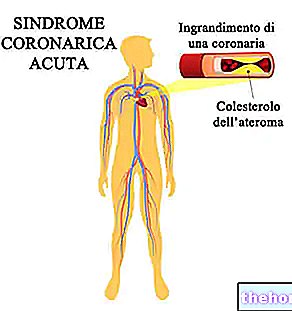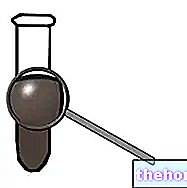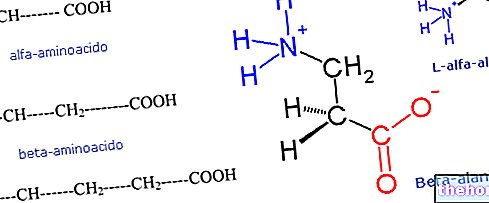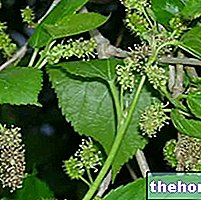
In fact, the causes of pain behind the knee include: tendinopathy of the hamstring muscles, Baker's cyst, tendinopathy of the gastrocnemius muscle, "tennis player's leg", injuries to the "postero-lateral corner of the knee," injuries to the posterior cruciate ligament, deep vein thrombosis, lesions of the posterior "horns" of the menisci and tendinopathy of the popliteal muscle.
Brief anatomical recall of the Knee
The knee is the important synovial joint of the human body, located between the femur (superiorly), tibia (inferiorly) and patella (anteriorly).
Its anatomy is quite complex and includes:
- The articular cartilage, which covers the lower surface of the femur, the inner side of the patella and the center of the upper surface of the tibia, protecting all these bones from mutual friction;

- The synovial membrane, which covers the joint from the inside and produces the synovial fluid, a fluid with a lubricating action for all the internal structures of the knee;
- The collateral ligaments, the cruciate ligaments and the patellar tendon, which, all together, guarantee the stability of the joint and the correct alignment between the femur and the tibia;
- The synovial bags, which are small sacs of synovial membrane, filled with a lubricating fluid very similar to synovial fluid;
- The internal meniscus (or medial meniscus) and the external meniscus (or lateral meniscus), which are pads of cartilage with a cushioning and anti-friction function, located on the sides of the upper surface of the tibia.
The popliteal cavity is the region of the lower limb located behind the knee, bounded by the hamstring muscles, semitendinosus and semimembranosus, superiorly, and by the gastrocnemius muscle, inferiorly.
Closed on the surface (before the skin) by the so-called popliteal fascia (continuation of the fascia lata), the popliteal cavity hosts several lymph nodes (popliteal lymph nodes) and is the site of passage for important blood vessels (popliteal vessels) and nerves (the branches of the sciatic nerve known as the tibial nerve and the common peroneal nerve).
In its deepest parts, the popliteal cavity has as its limit the popliteal face of the femur, the popliteal muscle and the posterior surface of the joint capsule of the knee.
Which medical figure treats the pain behind the knee?
The causes of pain behind the knee is a matter for orthopedic doctors, ie doctors specialized in the diagnosis, treatment and prevention of pathologies that can affect the musculoskeletal system.
Who Suffers Most from Pain Behind the Knee?
Pain behind the knee is a condition that people of all ages can suffer from, however it has a "higher incidence among adults and the elderly."
Generally, the people who most often develop pain behind the knee are sportspeople and individuals with particularly active lives, as they are most at risk of injuring their knees.
How common is the pain behind the knee?
Pain behind the knee is not very common, especially when compared to other types of pain in the same joint, such as pain in the inner knee, pain in the outer knee or pain in the anterior knee.
-crural;On the other hand, the less common causes of pain behind the knee include:
- Injuries to the posterior cruciate ligament;
- Deep vein thrombosis;
- The lesion of the posterior "horns" of one or both menisci;
- Tendinopathy of the popliteal muscle.
Tendinopathy of the hamstring muscles

The hamstring muscles are the three muscles of the posterior part of the thigh which have the particularity of originating all of them from the so-called ischial tuberosity, located on the ischium (a bone of the pelvis).
Known as hamstring, semitendinosus and semimembranosus, these muscles terminate, despite a common origin, at different points on the proximal end of the tibia and fibula.
Known as hamstring syndrome or hamstring syndrome, Tendinopathy of the hamstring muscles is the suffering of one or more of the terminal tendon insertions of the hamstring, semitendinosus and semimembranous muscles. The terminal tendons of the aforementioned muscles, in fact, reside and engage in portions of the tibia and fibula very close to the back of the knee.
Tendinopathy of the hamstring muscles includes both inflammatory and degenerative conditions, and can result from lacerative processes or functional overload (eg excessive physical activity with the lower limbs).
Baker's cyst
Also known as a popliteal cyst, Baker's cyst is an abnormal, lump-like protuberance that typically forms behind the knee as a result of synovial fluid leaking out of the popliteal bursa (one of the knee synovial bursae).

In most cases, Baker's cyst is the result of traumatic damage to the knee joint or a process of arthrosis (gonarthrosis); more rarely, Baker's cyst appears without a precise reason and in perfect health from part of the knee.
Tendinopathy of the gastrocnemius muscle
The gastrocnemius muscle, or twins, is one of the two main muscles (the other being the soleus) of the back of the leg (ie the part of the lower limb that runs from the knee to the foot).
The gastrocnemius muscle is formed by two elements, called the medial head and the lateral head, which have different point of origin (the medial head from the medial condyle of the femur and the lateral head from the lateral condyle of the femur) but equal terminal insertion (the tendon d "Achilles che s" inserts on the heel).

The tendinopathy of the gastrocnemius muscle is the suffering of the tendon that hooks the medial head or the lateral head to the femur; its correlation to the pain behind the knee depends on the proximity relationship between the back of the knee and the area of origin of the gastrocnemius muscle.
Like hamstring muscle tendinopathy, gastrocnemius tendinopathy includes both inflammatory and degenerative conditions, and can result from lacerative processes or functional overload (eg excessive physical activity with the lower limbs).
Did you know that ...
When it concerns the medial head, the tendinopathy of the gastrocnemius muscle is called medial tendinopathy of the gastrocnemius; when it affects the lateral head, it is called lateral gastrocnemius tendinopathy.
"Tennis player's leg"
"Tennis player's leg" is the slang expression indicating the tear or laceration of the tendon from which the plantar muscle originates, that is the muscle that runs from the lateral supracondylar ridge to the heel.
The "tennis leg" causes pain behind the knee, because the injured tendon hooks into a point on the femur very close to the posterior surface of the knee joint capsule.
Injuries to the posterolateral corner of the knee
Known by the abbreviation PAPE, the posterolateral angle of the knee is a specific region of this joint, which includes: the lateral collateral ligament, the popliteal-fibular ligament, the tendon of the popliteal muscle, the tendon of the hamstring muscle, the common peroneal nerve, the patellofemoral ligament, the lateral patellar retinaculum and the posterior horn of the lateral meniscus.
With the "expression" injuries to the "posterolateral corner of the knee" doctors mean all those sufferings affecting one or more structures of the PAPE.
Injuries to the posterolateral corner of the knee cause pain behind the knee, as the structures of the PAPE all have a relationship to the posterior portion of the knee.
Less Common Causes of Pain Behind the Knee
- Injuries (strain or tear) of the posterior cruciate ligament: the posterior cruciate ligament is one of the two ligaments of the knee joint that run from the lower surface of the distal end of the femur to the upper surface of the proximal end of the tibia (the other of these ligaments is the more "famous" cruciate ligament front).
- Deep vein thrombosis: it is the serious pathological process that leads to the formation of a blood clot inside a vein and from which very dangerous, because potentially fatal, embolic phenomena can arise.
- The lesion of the posterior "horns" of one or both menisci: The posterior "horns" of the medial and lateral meniscus are the posterior portions of these fundamental cartilage pads.
- Tendinopathy of the popliteal muscle: it is the suffering of the tendon from which the popliteal muscle originates and which finds its insertion on the lateral epicondyle of the femur, therefore extremely close to the popliteal cavity.
- Injuries to the anterior cruciate ligament
- Knee osteoarthritis (or gonarthrosis)
- Rheumatoid arthritis
- Chondromalacia
Complications
If the treatment of the triggering cause is inappropriate, the pain behind the knee risks becoming increasingly intense and debilitating or even taking on the characteristics of a chronic disorder.
A severely debilitating or chronic pain behind the knee is an obstacle to carrying out the most trivial daily activities (eg: climbing stairs, entering or exiting the car, etc.).
When to see a doctor?
Pain behind the knee is a symptom that should concern and lead the person concerned to see a doctor when:
- It has been going on for several days;
- Despite the rest and the application of ice, it persists and shows no signs of improving;
- It is the result of severe knee trauma;
- It is associated with several other symptoms.
The indications for its use are: 4-5 compresses a day on the painful area, for 15-20 minutes each (shorter or longer applications are ineffective);

- Anti-inflammatory drugs: they consist of the so-called NSAIDs or non-steroidal anti-inflammatory drugs; they are effective medicines, with limited side effects;
- Elevation of the suffering lower limb: keeping the lower limb elevated reduces the blood flow to the knee; less blood flow to a painful knee relieves pain and helps resolve any swelling.
- Compression bandage of the joint: serves to mitigate any swelling and a "possible sense of instability in the knee.
Special case: therapy of pain behind the knee due to deep vein thrombosis
If the pain behind the knee is the result of a deep vein thrombosis, the therapy focuses exclusively on the use of thrombolytic drugs, ie drugs capable of causing the lysis of thrombus and pathological emboli.
Specific therapy: what does it consist of and how does it vary?
Among the more specific treatments that can follow an "ineffective conservative therapy of the pain behind the knee, there are:
- Localized injection of corticosteroids. They are anti-inflammatory drugs much more powerful than NSAIDs, but also more dangerous if used improperly.
- Physiotherapy. Physiotherapy includes strengthening and stretching exercises for all the muscles of the suffering lower limb.
- Drainage of excess synovial and non-synovial fluid.
It consists in introducing a special needle inside the suffering knee (to be precise where it locates the swelling) and aspirating.
On some occasions, upon aspiration, the attending physician accompanies the injection of an anti-inflammatory drug belonging to the category of corticosteroids and / or the injection of a hyaluronic acid. - Surgery. It is a possible solution for all those cases of pain behind the knee related to joint damage. In such circumstances, in fact, surgery serves to "fix" the joint.
The cause of pain behind the knee (in other words, the specific therapy depends on the causal factor) has a decisive influence on the choice of specific therapy by the doctor.

